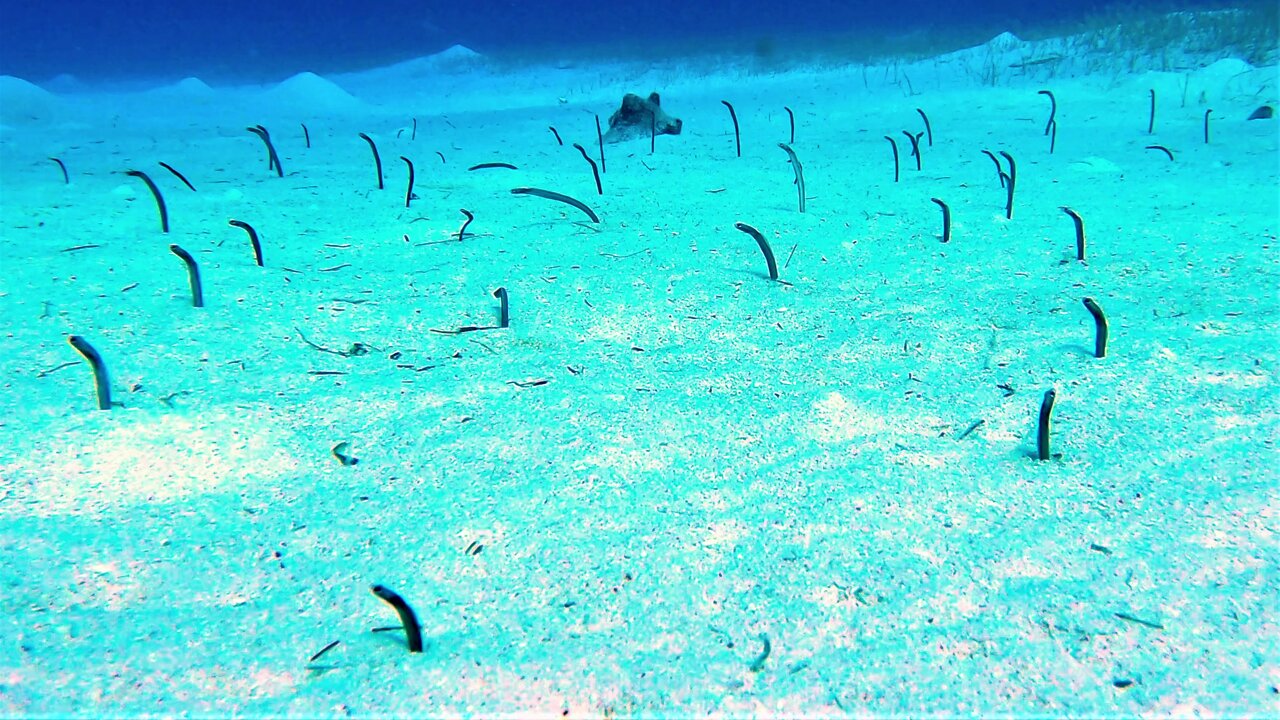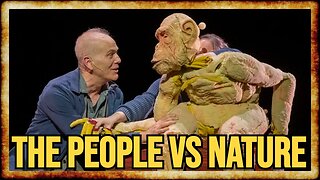Premium Only Content

Garden eels sway in current while catching food in Belize
The ocean is full of strange and fascinating animals that are unlike anything that we see on land. Some of the marine animals resemble plants in either appearance or in function. This is often intentional for camouflage that keeps them safe from predators or helps them ambush prey because they, themselves are predators. sometimes this resemblance is due to function because it makes them more efficient at gathering food.
The garden eel is a small animal that grows to a length of 60-100cm (2 feet to 3 feet), depending on the species. They anchor themselves in a hole in the sand or rubble that will allow them to retreat and hide at the slightest hint of danger. The eels coat their burrows with mucous so that the walls will not collapse. When unthreatened, they wave gently in the current, watching for plankton or other tiny animals to drift past them close enough to snatch them and eat them. A colony of garden eels resembles a bed of thing plants as they sway in unison in the current. Sometimes these colonies grow quite large, occupying an area as large as an acre.
Garden eels have adapted to this method of hunting for food because it expends less energy than swimming freely would do. They are able to catch all the food they need without venturing away for the safety of their hole. Scuba divers often see these interesting animals from a distance, but the eels will all retreat as the diver draws closer. Even the sound of the divers' bubbles will be enough cause for the eels to hide. Scuba divers wanting a closer look will do their best to slow their breathing and their approach. They can lie on the sand and patiently wait for the eels to grow bolder and emerge from their holes. This scuba diver was able to capture some of the eels on video with a very slow descent to the sand.
Scientists have found that the eels behave in a way that will make them as energy efficient as possible. When the current increases, stretching far out of their hole requires engagement of the eel's muscles to hold it in place. This effort is reduced if the eels form the rough shape of a question mark. It is no surprise that most of the eels in the colony will rest in an identical position and shape as they wait for food to be delivered by the current.
The more we learn about the ocean and the animals that live there, the more we understand that there is a delicate balance and that all animals play an important, even if mysterious role in maintaining that balance.
-
 5:26:52
5:26:52
Fed Reacts
7 hours agoZODIAC KILLER PT 2
49.5K9 -
 2:12:41
2:12:41
TheSaltyCracker
10 hours agoMSM Implodes After Trump Win ReeEEeE Stream 11-17-24
203K408 -
 4:31
4:31
SLS - Street League Skateboarding
10 days agoFuna Nakayama 3rd Place at SLS Sydney 2024 | Best Tricks
63.7K7 -
 2:15:24
2:15:24
vivafrei
19 hours agoEp. 236: BARNES IS BACK! Election Recap! Trump Nominees! Trump Persecutions - Wha's Next? & MORE!
235K230 -
 6:25:47
6:25:47
SynthTrax & DJ Cheezus Livestreams
18 hours agoDJ Cheezus & DEF JAM Fight for NY on PS2 - Hip Hop Violence and Vibes (1pm PST / 4pm EST)
94.1K4 -
 2:01:47
2:01:47
Nerdrotic
13 hours ago $14.15 earnedEgypt, Peru and Guatemala Luke Caverns RETURNS! | Forbidden Frontier #082
81K10 -
 LIVE
LIVE
Vigilant News Network
13 hours agoFDA Approves Trials for New “Pandemic” Vaccine | Media Blackout
2,073 watching -
 4:06:21
4:06:21
GamerGril
14 hours agoIM THE GREASTEST OF ALL TIME AT.... CHAOS | DAYS GONE
120K12 -
 3:00:18
3:00:18
Due Dissidence
1 day agoTHE PEOPLE VS NATURE by Kevin Augustine - plus a talkback w/ Jimmy Dore
138K20 -
 6:02:06
6:02:06
Rotella Games
19 hours agoMake the Hood Great Again | Day 3 | GTA San Andreas
91.5K6